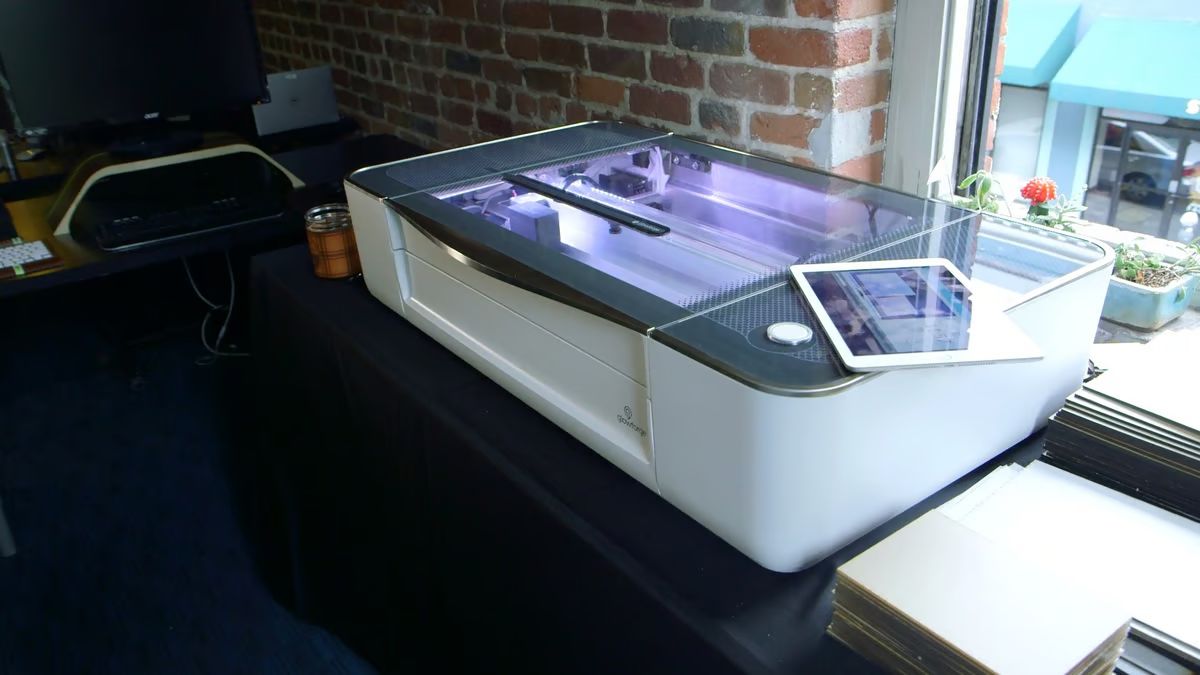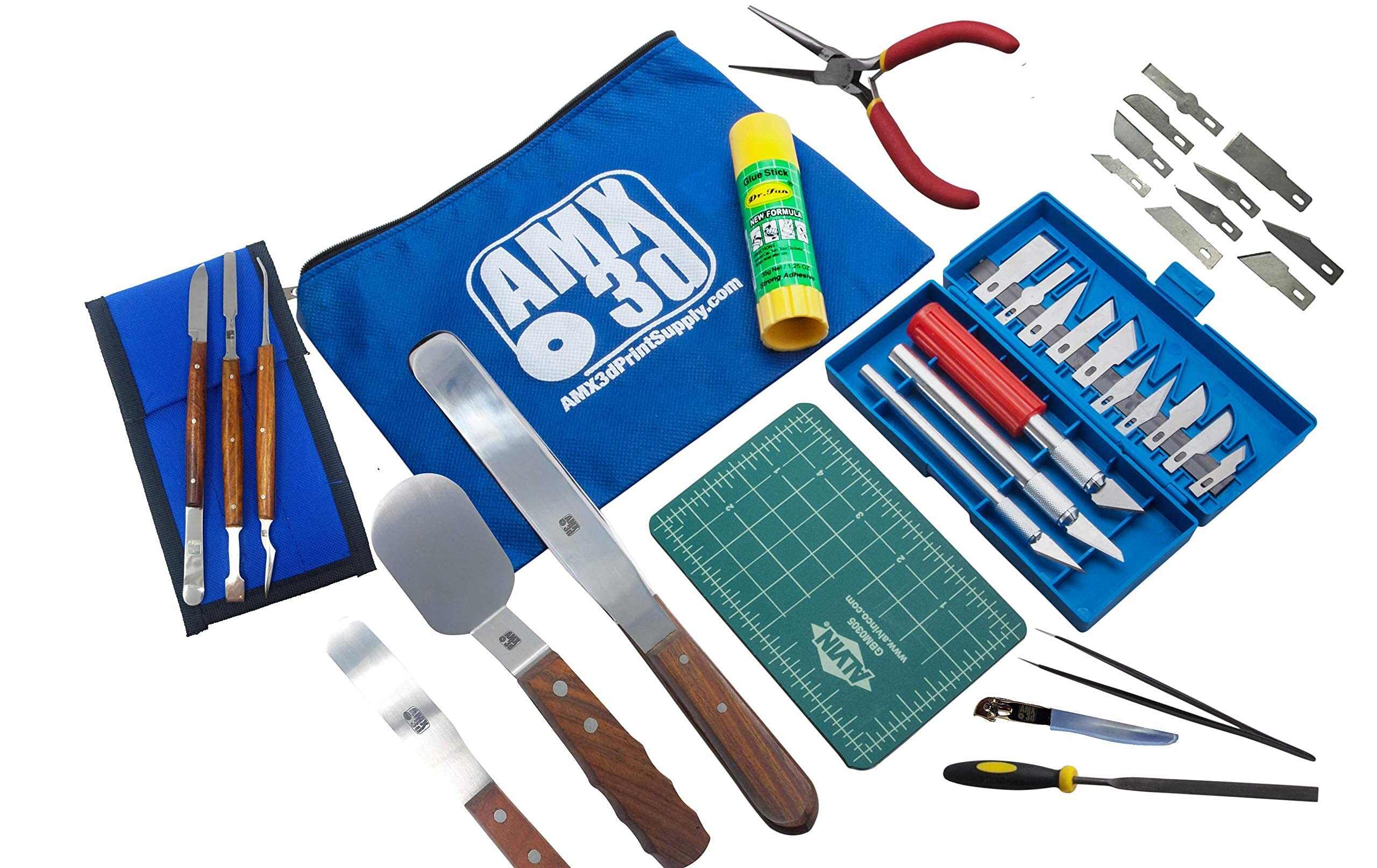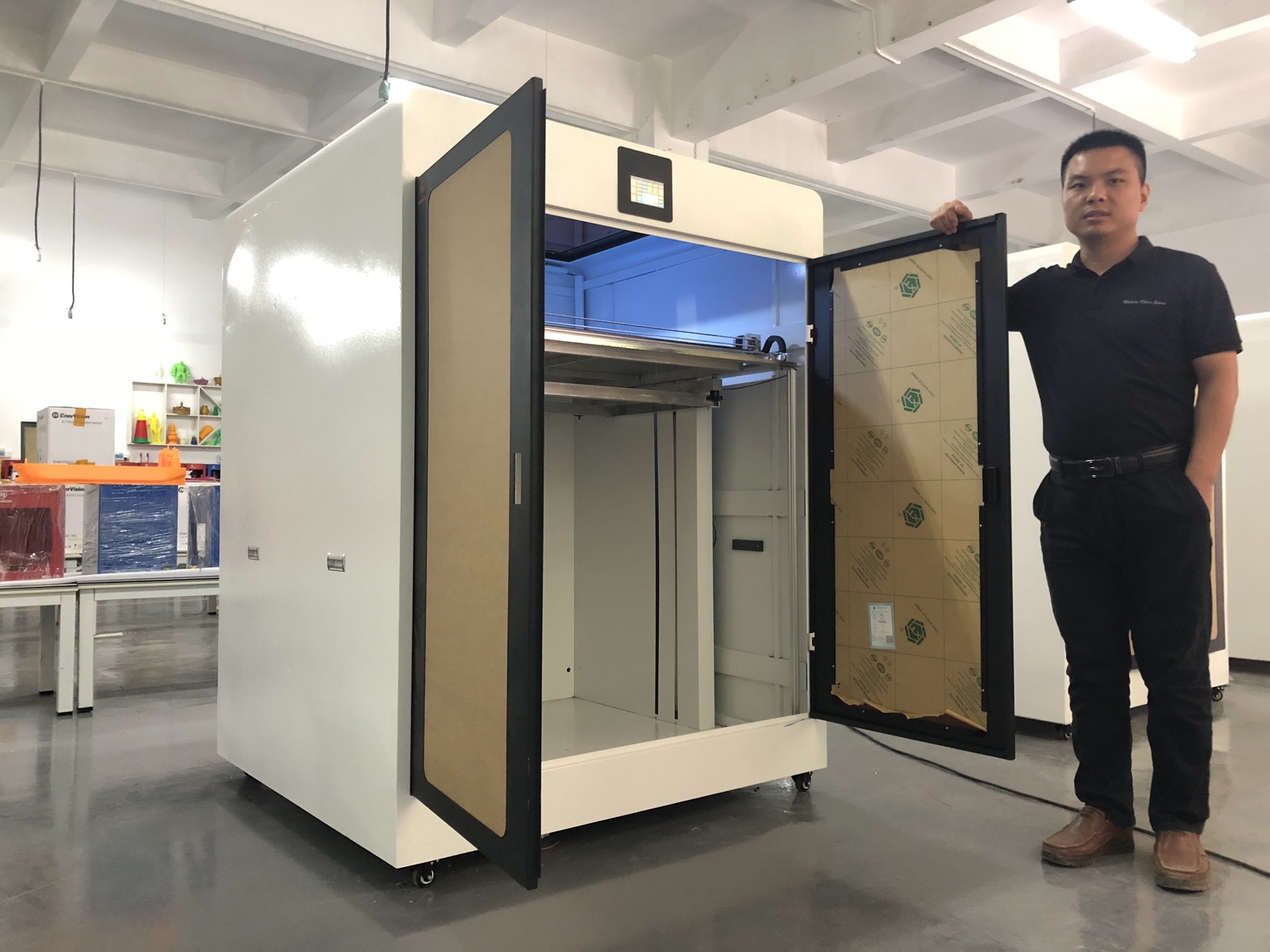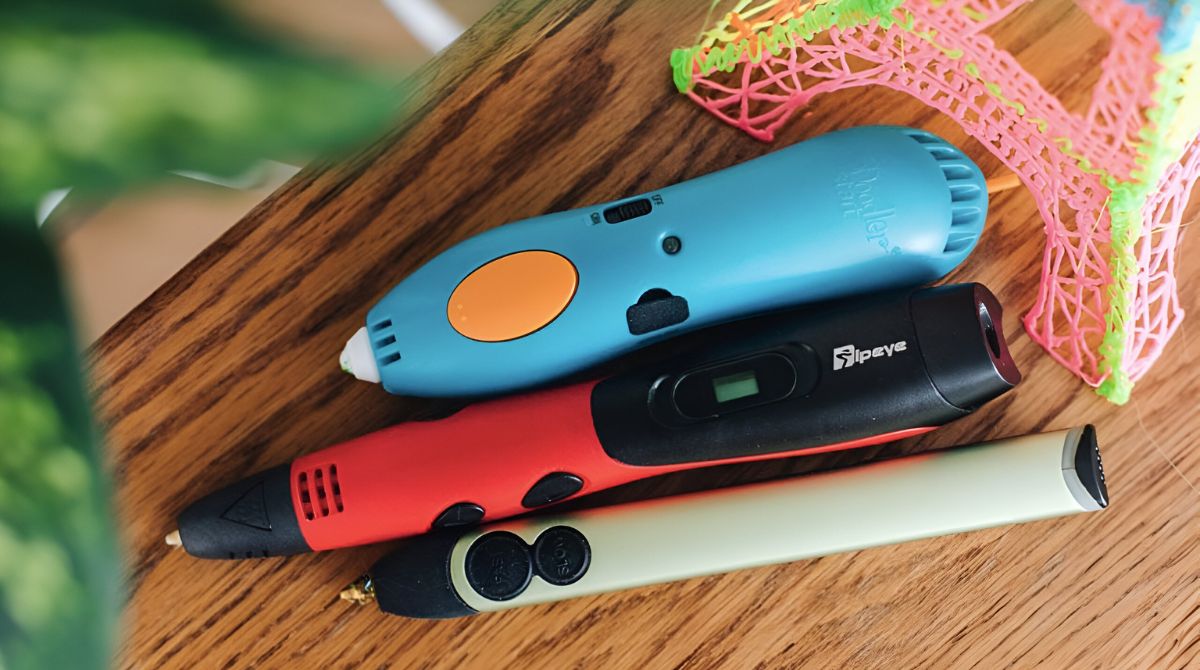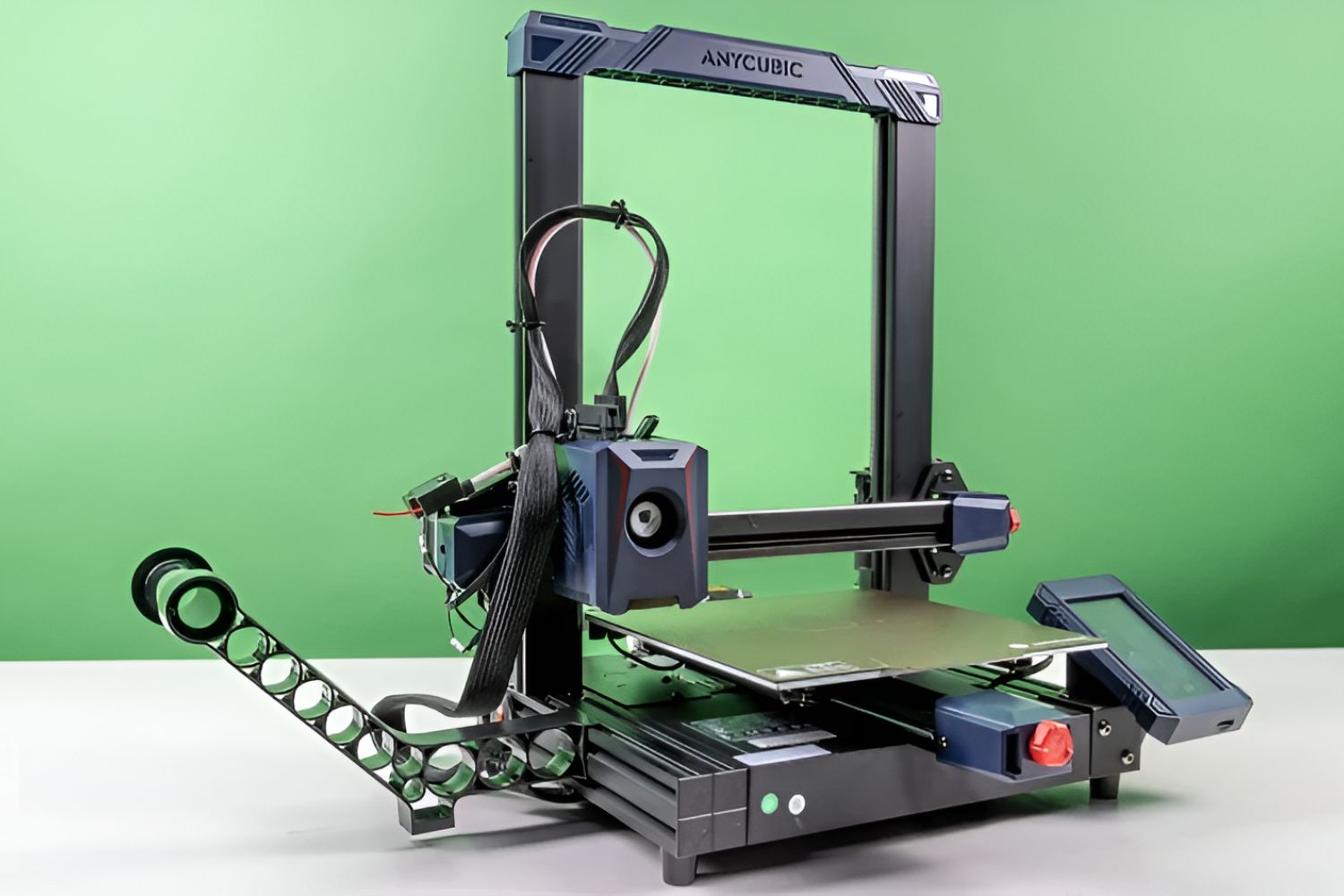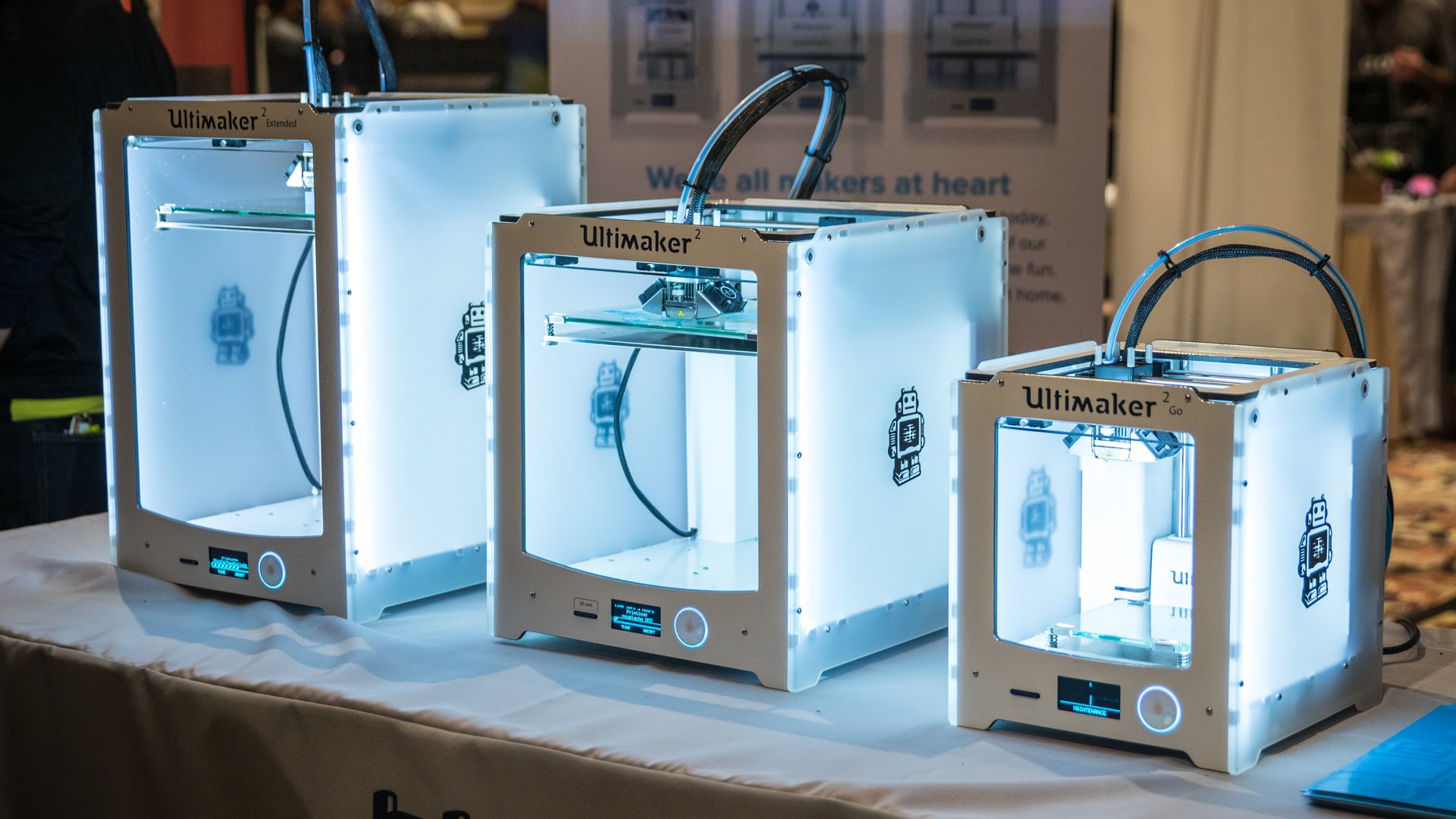Introduction
Welcome to the world of 3D printing! If you’re considering buying a 3D printer, you’re about to embark on an exciting journey of creativity, innovation, and endless possibilities. However, with so many options available on the market, it can be overwhelming to choose the right one for your needs. That’s why we’ve put together this guide to help you navigate through the key considerations when buying a 3D printer.
One of the first things you need to determine is your budget – how much you’re willing to invest in a 3D printer. You’ll find printers ranging from a few hundred dollars to several thousand dollars. The price will usually reflect the printer’s build quality, capabilities, and overall performance. It’s important to find a balance between your budget and the features you require.
Next, you’ll want to consider the build volume. The build volume refers to the maximum size of the objects you can print. If you plan on printing larger or more intricate objects, you’ll need a printer with a larger build volume. On the other hand, if you’re mainly interested in smaller prints, a printer with a smaller build volume may suffice. Assess your intended projects to determine the optimal build volume for your needs.
Print quality is another crucial factor to consider. You want your 3D prints to be detailed, accurate, and free from imperfections. The resolution of the printer, measured in microns, will determine the level of detail it can achieve. A lower micron value corresponds to higher resolution and finer details. Additionally, look for a printer with a stable build platform and proper leveling mechanisms to ensure consistent and precise prints.
Not all printers are compatible with every type of filament. Filaments such as PLA (Polylactic Acid) and ABS (Acrylonitrile Butadiene Styrene) are commonly used, but there’s a wide variety available, each with its own unique properties. Check that the printer you’re considering can handle the filaments you plan on using. Some printers are even capable of printing with flexible or specialty filaments.
Ease of use is an important consideration, particularly for beginners. Look for a printer with a user-friendly interface, intuitive controls, and easy-to-follow setup instructions. Some printers also offer features like automatic bed leveling or filament detection, which can simplify the printing process.
Software compatibility is crucial for a seamless printing experience. Confirm that the printer you choose is compatible with the slicing software you prefer to use. Slicing software converts the 3D model into instructions for the printer, so it’s essential that they work together smoothly. Additionally, check if the printer supports file formats commonly used in the industry, such as .STL or .OBJ.
Customer support is another aspect to consider. Look for a manufacturer with a good reputation for customer service, as it can make a significant difference if you encounter any issues or have questions along the way. Read reviews and seek feedback from other users to gauge the level of support provided by the company.
Finally, consider any additional features that may be important to you. Some printers offer wireless connectivity, allowing you to print remotely. Others may have a heated bed for improved print adhesion or a dual extruder for multi-color or multi-material prints. Evaluate these features based on your specific needs and preferences.
As you navigate through the world of 3D printing, remember to consult reviews and recommendations from experts and experienced users. Their insights can provide valuable guidance when narrowing down your options.
Now that you have a comprehensive understanding of the key factors to consider when buying a 3D printer, you’re ready to explore the market with confidence. Let your creativity take flight and enjoy the limitless possibilities that 3D printing has to offer!
Cost
When it comes to buying a 3D printer, cost is a crucial factor to consider. The price range for 3D printers is vast, ranging from budget-friendly options to high-end, industrial-grade machines. Determining your budget beforehand will help you narrow down your options.
Lower-cost 3D printers can start as low as a few hundred dollars, making them more accessible to beginners or individuals on a tight budget. These printers may have limitations on print quality, speed, or build volume, but they can still be an excellent starting point for learning the basics of 3D printing.
Mid-range 3D printers, typically priced between $500 to $2000, offer a balance between affordability and functionality. They often have better print quality, larger build volumes, and additional features that enhance the printing experience. These printers are suitable for enthusiasts or small businesses that require more advanced capabilities.
On the other end of the spectrum, high-end 3D printers come with a heftier price tag, ranging from a few thousand dollars to tens of thousands. These machines are designed for professional use and offer top-of-the-line features and performance. Industrial-grade 3D printers often have larger build volumes, faster print speeds, and superior print quality. They are ideal for businesses or individuals who require high precision and consistency in their prints.
While it can be tempting to prioritize cost savings, it’s important to strike a balance between your budget and the features and performance you require. Cheaper printers may be more affordable initially, but they might have limitations that hinder your ability to achieve the desired results. Investing in a higher-quality printer with better performance can save you time, frustration, and reprints in the long run.
Alongside the upfront cost of the printer, you should also consider the ongoing expenses. The cost of filaments, replacement parts, and maintenance should be factored into your budget. Different printers may have varying filament compatibility, requiring specific types of filaments, which can vary in price. Additionally, some printers may require regular replacement of certain components, such as nozzles or build plates. These costs should be taken into account to ensure you have a complete understanding of the overall cost of owning and operating a 3D printer.
While cost is an important consideration, it should not be the sole determining factor. It’s vital to assess your specific needs and consider the long-term value and return on investment that a 3D printer can provide. By finding the right balance between cost and features, you’ll be able to choose a printer that meets both your budget and printing requirements.
Build Volume
The build volume of a 3D printer refers to the maximum size of the objects it can print. It is an essential consideration as it determines the size limitations of your prints. Before purchasing a 3D printer, it’s important to assess your intended projects and select a printer with a build volume that aligns with your needs.
If you plan on printing small and simple objects, such as miniature models or precision parts, a printer with a smaller build volume may be sufficient. These printers are typically more compact and less expensive, making them suitable for beginners or hobbyists who primarily work on smaller projects and have limited space.
On the other hand, if you have more ambitious projects in mind or need to print larger objects, a printer with a larger build volume is necessary. These printers offer the flexibility to create bigger and more intricate designs, allowing you to explore a wider range of applications. They are often preferred by professionals, designers, and those working on architectural or industrial prototypes.
It’s important to note that as the build volume increases, the physical size of the printer itself also tends to increase. Consider the available space in your home, office, or workshop to ensure that the printer can be accommodated comfortably. Additionally, take into account any ventilation or safety requirements for the specific printer model you choose.
When determining the ideal build volume for your needs, also consider the resolution or layer height that you prefer. Smaller layer heights can result in finer details, but they also increase the print time. Therefore, striking the right balance between build volume and print quality is crucial.
Be aware that some printers advertise their maximum build volume, but in reality, you may not be able to utilize the full extent due to design limitations or other factors. It’s advisable to read reviews or seek feedback from experienced users who can provide insights into the practical limitations of the printer’s build volume.
Remember that while a larger build volume offers versatility, it may also require more filament and longer print times. Take into account these considerations when planning your projects, ensuring that you have the necessary resources, time, and patience to complete your prints successfully.
Ultimately, the build volume of a 3D printer is a vital consideration to ensure that it can accommodate the size of the objects you intend to print. Assess your specific project requirements and select a printer with a suitable build volume that aligns with your creative ambitions.
Print Quality
When buying a 3D printer, print quality is a fundamental aspect to consider as it directly impacts the final appearance and functionality of your printed objects. The level of detail, precision, and smoothness of the prints depends on the printer’s capabilities, components, and overall design.
The resolution of the printer plays a key role in achieving high print quality. It is typically measured in microns and refers to the thickness of each layer of the printed object. The lower the micron value, the finer the layers and the higher the detail that can be achieved. However, it’s essential to note that lower-resolution printers may have longer print times due to the increased number of layers needed to complete the object.
In addition to resolution, the stability and calibration of the printer’s build platform are critical factors. A stable build platform ensures that each layer is accurately placed, resulting in prints with precise dimensions and minimal distortion. Look for printers with a durable and rigid build platform that remains level throughout the printing process.
Another influential aspect of print quality is the extruder system. The extruder is responsible for melting and depositing the filament onto the build platform. A high-quality extruder with a well-designed hot end can deliver consistent and reliable flow of filament, leading to uniform and smooth prints. It’s worth considering printers with reputable extruder systems for optimal results.
No matter how advanced the printer itself is, the quality of the filament used also plays a significant role in print quality. Different filament materials may require specific temperatures and settings for optimal results. Ensure that the printer you choose is capable of accurately controlling the temperature to achieve the best print quality with the desired filament material.
It’s essential to note that achieving optimal print quality often requires fine-tuning and experimentation. Factors such as print speed, layer height, and cooling settings can greatly impact the final result. Familiarize yourself with the printer’s settings and experiment with different parameters to find the sweet spot for your specific projects.
Lastly, it’s helpful to consult reviews and recommendations from experienced users or online communities to gain insights into the print quality of different printer models. These individuals can provide valuable feedback as they have hands-on experience and can highlight specific strengths or limitations when it comes to achieving high-quality prints.
By considering the resolution, build platform stability, extruder system, filament quality, and user feedback, you can make an informed decision and choose a printer that delivers excellent print quality. Remember that achieving optimal results often requires a combination of the right printer and proper calibration and settings adjustments.
Filament Compatibility
When purchasing a 3D printer, it’s crucial to consider the filament compatibility as it directly affects the range of materials you can print with. Filaments are the materials used to create 3D prints, and they come in various types, each with its own unique characteristics and properties.
The most commonly used filaments are PLA (Polylactic Acid) and ABS (Acrylonitrile Butadiene Styrene). PLA is a biodegradable and environmentally friendly filament known for its ease of use and vibrant colors. ABS, on the other hand, is a more durable filament that can withstand higher temperatures and offers better flexibility. These two filaments are the go-to choices for many 3D printing enthusiasts.
However, there are numerous other filament options available, including PETG, TPU (Thermoplastic Polyurethane), nylon, wood filament, metallic filament, and more. Each filament type has its own unique properties, such as strength, flexibility, heat resistance, or specialized appearance.
When selecting a 3D printer, ensure that it is compatible with the filaments you plan to use. Some printers might have limitations on the types of filaments they can handle due to factors such as nozzle temperature, extrusion mechanisms, or the need for an enclosed printing chamber for certain high-temperature filaments.
It’s also important to consider the filament diameter compatibility. The two most common filament diameters are 1.75mm and 2.85mm. Ensure that the printer you choose can accommodate the filament diameter you prefer to work with, as using the incorrect filament size can lead to print quality issues and potential damage to the printer’s extruder system.
Additionally, some printers offer additional features or modifications to enhance filament compatibility. For example, printers with a heated bed are often better suited for printing with materials that tend to warp, such as ABS or certain types of nylon. Others may have dual extruders, allowing for multi-color or multi-material prints.
If you have specific filament materials in mind or require compatibility with niche filaments for specialized applications, it’s advisable to research and read reviews about the printer’s compatibility with those materials. Expert opinions and user experiences can help determine whether the printer is suitable for your preferred filaments and if it can deliver the desired print quality and consistency.
By ensuring the compatibility of your chosen printer with the filaments you plan to use, you can expand your creative possibilities and achieve the desired results with a wide range of materials. Consider your specific project requirements and explore the filament compatibility details to make an informed decision.
Ease of Use
When investing in a 3D printer, considering the ease of use is important, especially if you are a beginner or prefer a hassle-free printing experience. A user-friendly printer can save you time, effort, and frustration, allowing you to focus on your designs and creativity.
One aspect to evaluate is the user interface of the printer. A clear and intuitive interface with easy-to-use controls and a well-organized menu can streamline the printing process. Look for printers that offer a straightforward navigation system, allowing you to access essential settings and functions without confusion.
Instructions and setup processes should also be straightforward and well-documented. A printer that comes with detailed setup instructions, either in the form of printed manuals or readily available online resources, can greatly assist in the initial assembly and calibration process. This ensures that you start your 3D printing journey on the right foot.
Another feature that adds to the ease of use is automatic bed leveling. This functionality eliminates the need for manual leveling, which can be time-consuming and challenging for beginners. With automatic bed leveling, the printer automatically adjusts the bed height, ensuring a level printing surface for optimal print quality.
Compatible slicing software is an essential aspect to consider for seamless printing. The slicing software converts your 3D model into the instructions that the printer understands. Check if the printer is compatible with widely used slicing software programs, such as Cura or Simplify3D, as they often come with user-friendly interfaces and comprehensive settings for better control over the printing process.
Filament loading and unloading mechanisms also play a role in ease of use. Look for printers that offer simple and efficient filament changing procedures. Some printers have filament detection sensors that automatically pause the print if the filament runs out or encounters an issue, allowing you to easily replace or fix the problem before resuming printing.
Wireless connectivity is another convenience feature worth considering. Wi-Fi or Bluetooth connectivity enables you to send print files wirelessly to the printer, eliminating the need for manual file transfer via USB. This can be especially useful if you work in a different room or prefer to control the printer remotely.
Lastly, it’s worth considering printers that offer user communities or support platforms. These include forums, online communities, or dedicated support teams where you can seek help, share experiences, and get guidance when encountering difficulties or needing advice. Having access to a supportive community can be invaluable, especially for beginners learning the ropes of 3D printing.
By choosing a printer designed with user-friendly features, you can simplify the 3D printing process and enjoy a smoother experience from start to finish. Consider the user interface, setup instructions, bed leveling mechanisms, slicing software compatibility, filament handling, wireless connectivity, and support options available when evaluating the ease of use of different printer models.
Software Compatibility
When purchasing a 3D printer, one crucial factor to consider is software compatibility. The software you use to prepare and send your 3D models to the printer can significantly affect your overall printing experience, workflow efficiency, and the level of control you have over the printing process.
The primary software used for 3D printing is slicing software. Slicing software takes your 3D model and slices it into layers, generating the instructions that the printer needs to create the physical object.
There are various slicing software options available, with popular ones being Cura, Simplify3D, and PrusaSlicer. These programs offer a variety of features, including advanced print settings, support generation, layer customization, and more. It’s crucial to ensure that the printer you choose is compatible with the slicing software you prefer to use.
Compatibility with different file formats is another aspect to consider. Most printers support the standard STL (StereoLithography) file format, which is widely used in the industry. However, some printers may also support other file formats, such as OBJ or AMF. Check the specifications of the printer to confirm its compatibility with the file formats you commonly work with.
Some manufacturers provide their software as part of the printer package. While these proprietary software solutions can offer a seamless integration with the printer and specific optimizations, they may also have limitations in terms of functionality or user-friendliness. Ensure that the manufacturer-provided software meets your requirements and offers the features you need to achieve your desired prints.
It’s also worth considering the level of community support and development surrounding the software. Open-source software, like Ultimaker’s Cura, often benefits from active communities that continuously enhance the software through updates and plugins. These communities can provide valuable resources, plugins, and support to help you optimize your printing experience.
Some advanced slicing software, like Simplify3D, offers additional features and more granular control over the printing parameters. While they often come with a price tag, they can be worth the investment for those seeking full control and advanced capabilities. Consider your specific needs and budget when evaluating the compatibility of different slicing software.
Additionally, consider the compatibility of the printer with other design software that you may use to create or modify 3D models. Popular modeling software includes Autodesk Fusion 360, Blender, or SketchUp. Ensure that the printer you choose is compatible with the file formats generated by these software programs.
By carefully considering software compatibility, you can ensure a smooth 3D printing workflow, easily transfer your models to the printer, and have control over the print settings that impact the final result. Assess your preferred slicing software, file format compatibility, potential for community support, and any additional software you use for designing, to make an informed decision on the software compatibility of the printer.
Customer Support
When purchasing a 3D printer, it’s important to consider the level of customer support provided by the manufacturer. Good customer support can make a significant difference, especially if you encounter any issues, have questions, or require assistance during your 3D printing journey.
Start by researching the manufacturer’s reputation for customer support. Look for reviews, testimonials, or feedback from other users to gauge their experiences with the company’s support team. Positive reviews, prompt response times, and helpful resolutions are indicators of reliable customer support.
Responsive and knowledgeable customer support is particularly crucial for beginners. You may have questions about printer setup, troubleshooting, or general operation. Having access to experts who can guide you through these processes can greatly expedite your learning curve and minimize frustration.
Consider the different channels available for customer support. Manufacturers may offer support through emails, ticketing systems, online messaging, or phone calls. Evaluate the channels to determine which ones are convenient and effective for you. Additionally, check if the support is available during your preferred hours of communication, especially if you reside in a different time zone than the manufacturer.
It can also be beneficial to check if the manufacturer has an active and helpful user community or forum. These platforms allow users to connect, share experiences, and seek assistance from one another. Being part of a supportive community can provide valuable insights and solutions to common issues.
Warranty and repair policies are important considerations as well. Understand the timeframe and coverage provided by the warranty, including any limitations or conditions. Determine the process for warranty claims or repairs, such as shipping requirements or service center locations. A fair and reliable warranty policy provides peace of mind in case of any unexpected product defects or malfunctions.
Another aspect to consider is the availability of online resources, such as user manuals, troubleshooting guides, or video tutorials. Having access to comprehensive documentation can save you time and effort when seeking answers to common questions or technical issues.
Finally, assess the transparency and openness of the manufacturer to customer feedback and their willingness to continuously improve their products and services. A company that values customer feedback and actively incorporates it into their product development and support processes demonstrates a commitment to customer satisfaction.
By prioritizing customer support when selecting a 3D printer, you can ensure a positive and smooth experience throughout your 3D printing journey. Reliable support channels, prompt responses, helpful documentation, and a supportive user community can make a significant difference in your overall satisfaction with the product and the manufacturer.
Additional Features
When exploring 3D printers, it’s worth considering the additional features offered by different models. These features can enhance your printing experience and provide added functionality and convenience. While not essential, they can be advantageous depending on your specific needs and preferences.
One common additional feature is wireless connectivity. Some printers support Wi-Fi or Bluetooth connectivity, allowing you to send print files wirelessly from your computer or smartphone. This eliminates the need for physical connections or transferring files via USB, providing more convenience and flexibility in managing your prints.
Automatic bed leveling is another feature that simplifies the setup process. Instead of manually adjusting the bed height, printers with automatic bed leveling mechanisms detect and compensate for any differences in the bed level. This feature ensures a consistently level printing surface, which is crucial for accurate and reliable prints.
Heated beds are another beneficial feature, especially when working with materials like ABS or other filaments prone to warping. A heated bed helps in achieving better print adhesion to the build platform, reducing the risk of prints lifting or warping during the printing process.
Dual extrusion is a feature that allows the printer to have two print heads, enabling the printing of multi-color or multi-material prints. This feature can add versatility to your printing capabilities and open up new possibilities for creating complex and visually appealing designs.
Some printers offer built-in cameras or webcams that allow you to remotely monitor your prints. This feature is particularly useful if you want to keep an eye on the printing progress while being in a different room or even outside your home or office.
Touchscreen interfaces are becoming increasingly popular as they provide a more intuitive and user-friendly experience compared to traditional button interfaces. Touchscreens allow for easier navigation through the printer’s settings and menu, making it simpler to configure and control the printing process.
Noise reduction features can be especially desirable, especially if you plan on keeping the printer in a shared workspace or a quieter environment. Some printers come with silent stepper motors or noise dampening enclosures to minimize the operational noise level.
A filament runout sensor is a convenient feature that automatically pauses the print when the filament runs out, ensuring that you do not end up with incomplete prints. This feature allows you to replace the filament and resume printing without wasting time or material.
Consider the additional features that align with your specific requirements and budget. Keep in mind that while these features can enhance your printing experience, they may come with additional costs. Evaluate their utility and determine whether they will contribute to your overall satisfaction and successful utilization of the printer.
By assessing the additional features provided by different printers, you can select a model that offers the functionalities and conveniences that align with your specific needs. Remember, prioritize the features that have the most value for your projects and the way you intend to use the 3D printer.
Reviews and Recommendations
When considering buying a 3D printer, it’s beneficial to seek reviews and recommendations from experts, experienced users, and trustworthy sources. Reviews provide valuable insights into the performance, reliability, and user experience of different printer models, helping you make an informed decision.
Start by researching professional reviews from reputable websites and industry publications. These reviews often provide comprehensive assessments of various printers, highlighting their pros and cons, print quality, features, and ease of use. Pay attention to any specific considerations mentioned, such as noise levels, print speed, or material compatibility, that may be relevant to your specific needs.
User reviews and feedback from fellow enthusiasts or professionals who have hands-on experience with the printers can be equally valuable. Platforms like online forums or social media groups dedicated to 3D printing often have active communities that are willing to share their experiences, answer questions, and offer advice. Engage with the community, ask questions, and seek recommendations based on your specific requirements.
When reading reviews, consider the credibility of the source and the expertise of the reviewer. Look for detailed and unbiased assessments that provide a balanced perspective on the printer’s strengths and weaknesses. Take note of any recurring positive or negative comments, as they can serve as indicators of the printer’s overall performance and reliability.
A common consideration is the level of customer support provided by the manufacturer. Reviews often mention the responsiveness and helpfulness of the manufacturer’s customer support team, providing insights into the level of after-sales service you can expect.
While reviews and recommendations are valuable resources, it’s important to keep in mind that everyone’s experience may vary. What works well for one person may not be the best fit for another. Consider your specific requirements, project goals, and expertise level when evaluating the suitability of a printer based on reviews.
Additionally, seek out print samples or examples of prints made with the printers you are considering. Some manufacturers or users share images or videos of prints created with their printers, giving you a visual representation of the print quality and capabilities. This can help you assess whether the printer can meet your expectations and produce the type of prints you desire.
By utilizing reviews, recommendations, and user feedback, you can gain valuable insights into the performance, reliability, and user experience of different 3D printers. These insights can guide your decision-making process and help you select a printer that aligns with your specific requirements and expectations.
Conclusion
As you reach the end of this guide, you’ve gained valuable insights into the key factors to consider when purchasing a 3D printer. Cost, build volume, print quality, filament compatibility, ease of use, software compatibility, customer support, additional features, and reviews and recommendations all play important roles in finding the right printer for your needs.
By evaluating your budget and the features you require, you can find a 3D printer that strikes a balance between affordability and functionality. Consider the build volume that aligns with your intended projects, ensuring you can print objects of the desired size and complexity.
Print quality is crucial, and understanding the printer’s resolution, stability, and extruder system can help you achieve accurate and detailed prints. Filament compatibility is another aspect to consider, as it determines the range of materials you can work with, offering various properties and appearances.
The ease of use, software compatibility, and customer support provided by the manufacturer are essential for a smooth and stress-free printing experience. Consider additional features that can enhance your projects, such as wireless connectivity, automatic bed leveling, or dual extrusion.
Lastly, reviews and recommendations from experts and experienced users can provide valuable insights and guidance, helping you make an informed decision. Consider the feedback of others and assess the printer’s performance, reliability, and overall user experience.
By carefully considering these factors and finding the right balance that aligns with your specific needs and preferences, you can confidently choose a 3D printer that will serve as your creative tool, unlocking endless possibilities for innovation and self-expression.
Now that you have a comprehensive understanding of the key considerations when buying a 3D printer, it’s time to embark on your 3D printing journey. Enjoy the process of bringing your ideas to life and exploring the exciting world of additive manufacturing.









